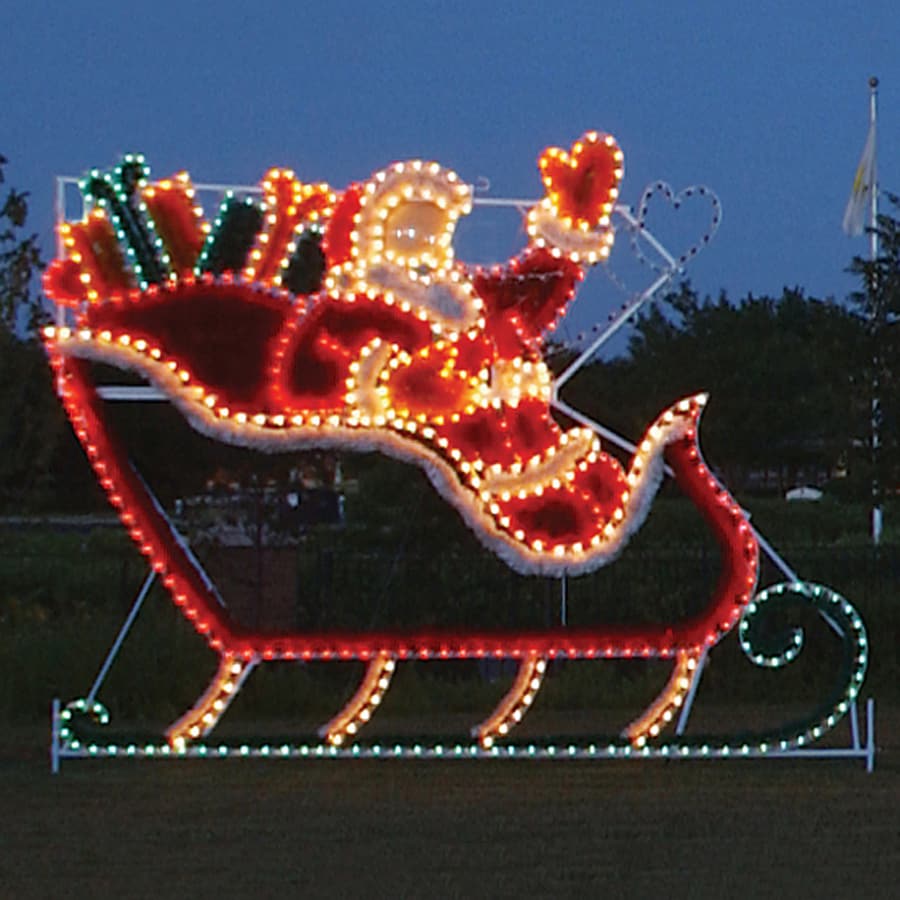Animated Outdoor Christmas Decorations transform ordinary homes into enchanting winter wonderlands. From inflatable snowmen swaying in the breeze to dazzling light displays choreographed to holiday music, the possibilities are endless. This guide delves into the diverse world of animated Christmas decorations, exploring their types, popular themes, safety considerations, environmental impact, creative design ideas, and cost-effectiveness. We’ll cover everything you need to know to create a spectacular and memorable holiday display.
We’ll examine various decoration types, from classic inflatables to cutting-edge projected animations, comparing their energy efficiency and manufacturing processes. We’ll also explore popular themes, delve into their history, and even introduce some innovative new ideas. Learn how to ensure safe setup and maintenance, minimize environmental impact, and create stunning displays that perfectly complement your home’s style and budget.
The Impact of Animated Outdoor Christmas Decorations on the Environment

Animated outdoor Christmas decorations, while bringing festive cheer, contribute to environmental concerns through their production, energy consumption, and disposal. Understanding these impacts allows for more responsible choices and minimizes the environmental footprint of holiday celebrations.The environmental impact of animated outdoor Christmas decorations stems primarily from the materials used in their manufacturing and their energy consumption during operation. Manufacturing processes often involve the extraction and processing of raw materials like plastics (PVC, ABS), metals (aluminum, steel), and electronic components, all of which have associated environmental costs.
Plastic production, for example, contributes to greenhouse gas emissions and relies on finite resources. Metal mining and processing also carry environmental risks, including habitat destruction and water pollution. The electronic components within the decorations contain potentially hazardous substances that require careful management during disposal.
Material Use and Manufacturing Impacts
The manufacturing of animated Christmas decorations involves a complex supply chain with various environmental consequences. The extraction of raw materials, such as petroleum for plastics and various ores for metals, often leads to habitat disruption and pollution. The energy-intensive manufacturing processes contribute to greenhouse gas emissions, and the transportation of materials and finished products adds to the carbon footprint.
Specific examples include the energy consumed in plastic molding and the emissions from smelting metals. The use of certain plastics, such as PVC, presents a particular challenge due to their persistence in the environment and potential for leaching harmful chemicals. Moreover, the manufacturing processes may generate waste, adding to landfill burden.
Energy Consumption and Energy-Saving Solutions, Animated Outdoor Christmas Decorations
Energy consumption varies significantly depending on the type and features of the animated decorations. LED-based decorations generally consume far less energy than those using incandescent bulbs. For example, a string of 50 LED lights might consume only 5 watts, whereas a similar string of incandescent lights could consume 50 watts or more. Large, motorized decorations, such as inflatable figures with internal lighting, have a substantially higher energy demand than simpler, static displays.
Energy-saving solutions include opting for LED lighting, using timers to limit operational hours, and selecting decorations with energy-efficient motors. Replacing older, inefficient decorations with newer, energy-efficient models is another effective strategy. Choosing decorations with low-voltage power supplies can also reduce energy consumption and associated risks.
Responsible Disposal and Recycling
A responsible approach to the end-of-life management of animated Christmas decorations is crucial to minimizing environmental harm. Many components of these decorations, such as plastics and metals, can be recycled, but often require specific sorting and processing. Consumers can facilitate recycling by separating components (e.g., separating plastic housings from electronic parts) and disposing of them appropriately according to local recycling guidelines.
Certain municipalities offer dedicated e-waste recycling programs that handle the electronic components of these decorations safely. For decorations that are beyond repair or recycling, responsible disposal through designated waste streams is necessary to prevent the release of hazardous materials into the environment. Promoting the use of durable and repairable decorations extends their lifespan, thereby reducing the frequency of disposal and associated environmental impacts.
Furthermore, supporting manufacturers committed to sustainable materials and manufacturing practices encourages a shift towards environmentally friendlier decorations.
Creating a captivating animated outdoor Christmas display is a rewarding experience, blending creativity, technology, and holiday spirit. By carefully considering the various factors discussed—from decoration type and theme to safety, environmental impact, and cost—you can transform your home into a festive beacon that delights neighbors and spreads holiday cheer. Remember to prioritize safety, embrace sustainable practices, and let your creativity shine to create a truly unforgettable Christmas display.